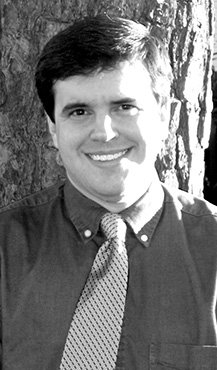William Dunbar left a life of privilege and ease in Scotland and embarked on one of the great adventures of early Arkansas. He built of learning and discovery and gave to the nation an in-depth look at the northern Louisiana and Arkansas.
Dunbar was born at his father’s estate in northern Scotland in 1750. His father, Sir Archibald Dunbar, was member of the British nobility as the Fourth Baronet of Northfield and Duffus. He was one of seven children born into a life of privilege.
He was extremely intelligent with a deep sense of curiosity about the world around him. While his brothers would hunt and drink and carouse as they got older, Dunbar devoured books on every subject he could find. He had a very serious demeanor and was a deep thinker. At age 13 in 1763, he was sent by his father to King’s College in Aberdeen. The university was already almost 300 years old with a reputation as one of the finest colleges in the British Isles. Dunbar pursued his studies with great passion, graduating with a masters degree at age 17 in 1767.
His father died in 1769. At odds with his older brother, who had inherited the bulk of the estate as the oldest surviving son, in 1771, Dunbar left Scotland for Philadelphia in hopes of more opportunities. Dunbar became a merchant in the thriving port city. He soon formed a partnership with John Ross, another Scottish immigrant and merchant. Eventually, the two found their way to Florida and soon afterward bought land near Baton Rouge, Louisiana, on what was still the English side of the Mississippi River across from Spanish Louisiana.
By 1784, he had acquired an impressive farm near Natchez, Mississippi. He married, and the couple ultimately had nine children. With his family and finances established, Dunbar returned his attention to the sciences he had loved as a child. He invented a new screw-press to improve cotton baling and began the practice of producing square bales of cotton to more efficiently use storage space on the way to market. He served as Surveyor General for West Florida (southern Alabama, southern Mississippi, and the area of Southeast Louisiana east of the Mississippi River). By 1799, he was publishing the first recorded meteorological reports of the Mississippi River Valley. He also corresponded often with leading American scientists of the day. He constructed a modest astronomical observatory at his plantation and invited the public to observe the skies with him while teaching them about astronomy.
After the United States bought Louisiana from France in 1803, President Thomas Jefferson decided to commission a series of exploratory expeditions into the new territory to learn more about geography and environment of the region. Four expeditions would ultimately be sent, of which the Lewis and Clark Expedition has become the most famous. The expedition into Arkansas would also prove important for the region. Dunbar had enjoyed a warm correspondence with Jefferson for several years on a variety of scientific topics. Jefferson quickly chose Dunbar to lead an expedition along the Ouachita River.
George Hunter, a noted Philadelphia chemist, accompanied Dunbar. They hired Samuel Blasier, a French trapper based in the Ft. Miro area (modern-day Monroe, Louisiana), to guide them. They set out from near Dunbar’s estate in October 1804 and traveled by boat from the Mississippi River on their way to the Ouachita. The scientists made careful notes of the riverways and the wildlife in the forests surrounding them. Though it is a relatively short distance from Natchez to Arkansas, the expedition took three months altogether, stopping to carefully study all they saw. At Monroe, the steadily shallowing river forced them to change boats, renting one for $1.25 per day. A group of 13 soldiers at Ft. Miro rowed the boat the rest of the way.
They crossed into what is now Arkansas by November. They carefully traveled across South Arkansas, along the edge of what is now Union County and toward the future sites of Camden and Arkadelphia. They encountered the different Native American tribes and learned the local landmarks.
Eventually, the team made it all the way to what is now the Hot Springs area. They found that already settlers were wandering into the area and taking advantage of the natural springs, believing they had a medicinal quality. The springs long had a mystical reputation for healing properties among the area tribes as well. The river itself continues toward Mena to the West, forming in the mountains of western Arkansas. By January 1805, the team crossed back into the Monroe area. Hunter and Dunbar quickly compiled their data into a report for Jefferson.
The Hunter-Dunbar Expedition also helped spread the reputation of the Hot Springs area across the nation. Permanent settlements began appearing in the area by 1807, and the city itself was incorporated in 1851. Camden and Monroe became important port cities in the coming decades because of their positions on the river.
Impressed with the success of the voyage, Jefferson complimented Dunbar’s efforts and enlisted him in the planning of a second expedition, this one to be along the Red River. However, Dunbar’s declining health prevented him from participating. Dunbar continued to promote science and education in Mississippi for the next several years. He lived the remainder of his days quietly at his estate near Natchez and died in 1810.

